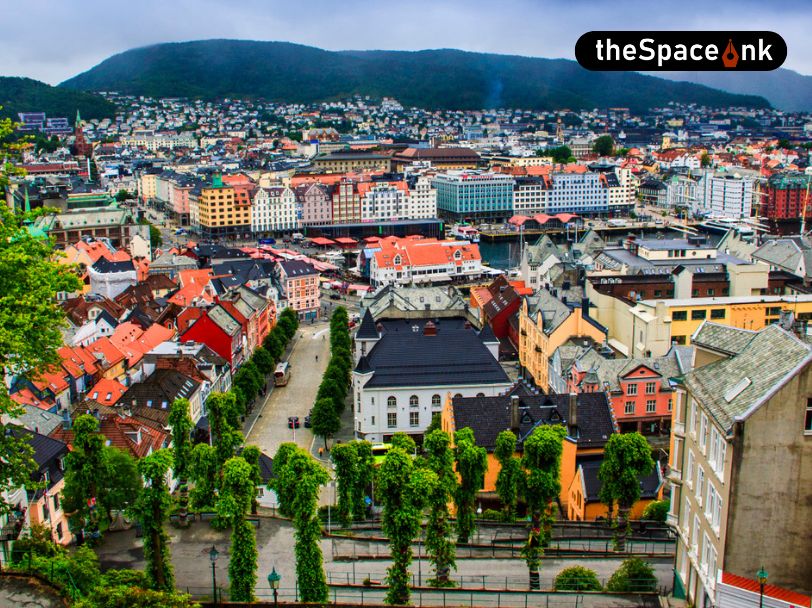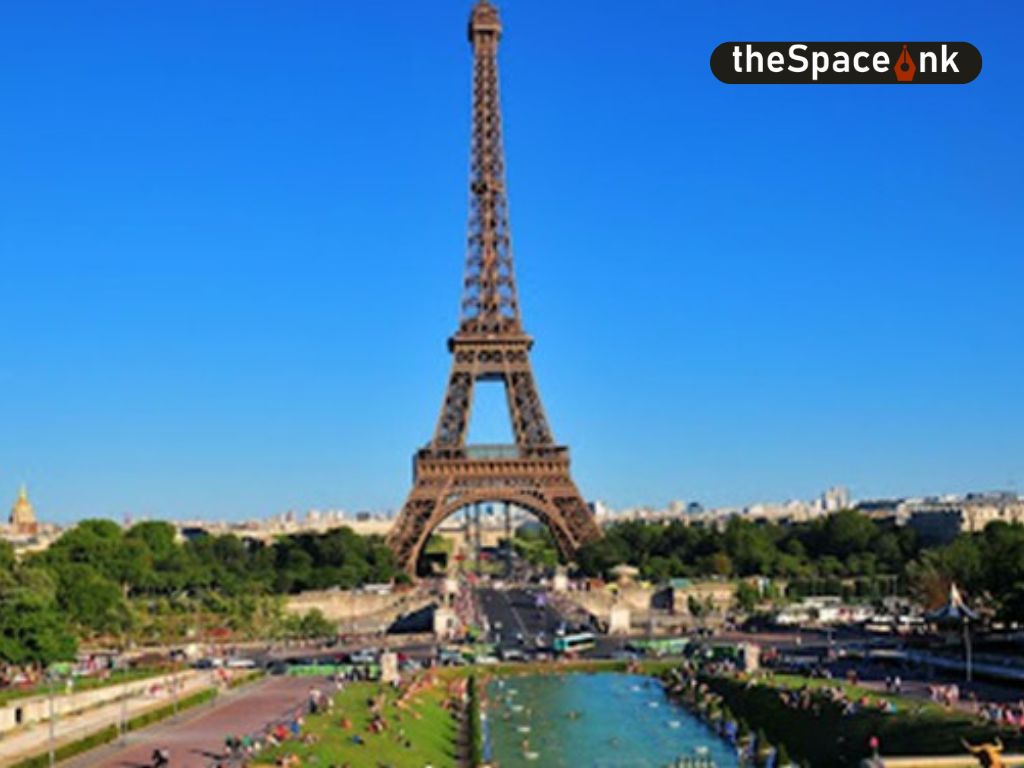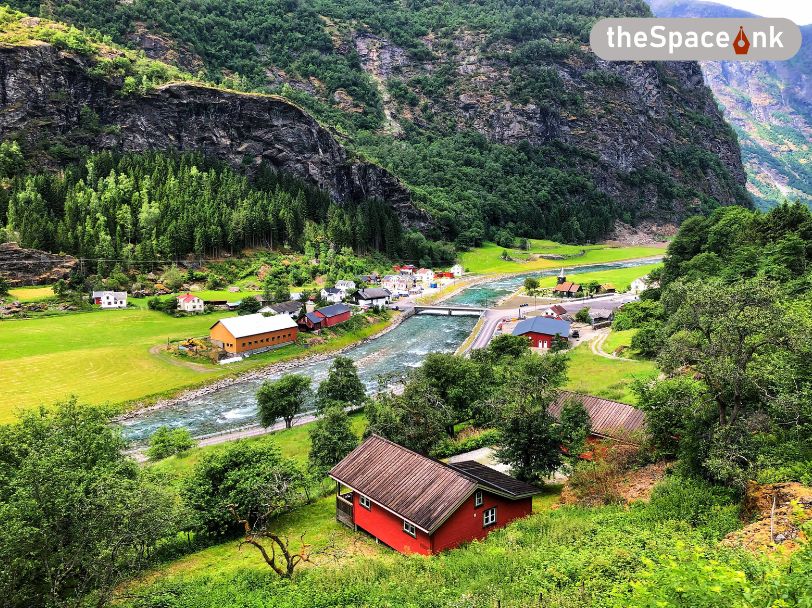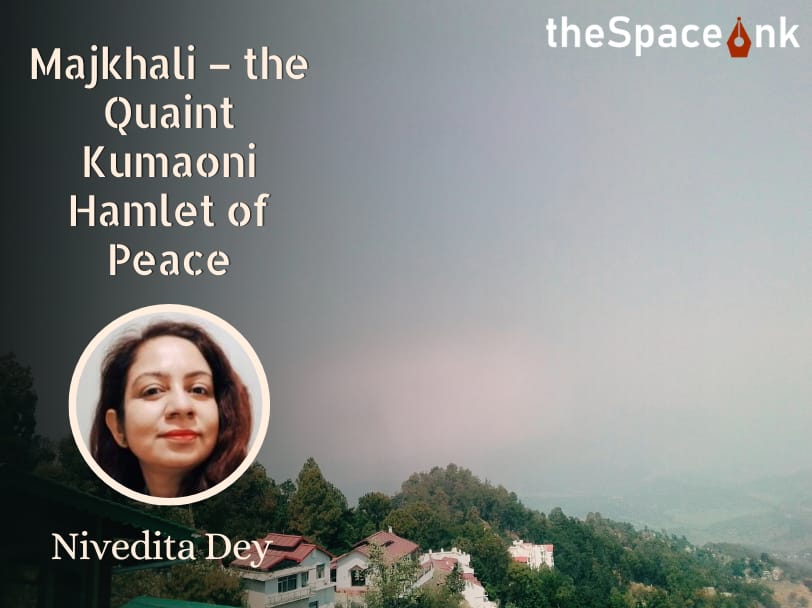Wickquasgeck Trail, Heeren Straat, Heeren Wegh and Broadway
I had noticed the girl walking towards me across the grass in the park as I looked around for a place to sit. Soon she was right in front of me, looking straight at my neck as she posed the question, “Where did you get that bolo tie?” She went on to add that she liked it too.
Startled out of thoughts I looked at the young woman in blue jeans and simple white top sitting beside me on the stack of hay. Her straight hair framed an oval face out of which dark eyes looked at me with genuine interest. She carried an Ipad.
“My name is Elise,” she said, introducing herself. Lips widening into a cheerful smile she asked again, “Did you buy it at the Museum of Native Americans in Manhattan”.
I told her where I had bought the bolo tie – a Native American ornament worn around the neck. The metal piece usually a couple of inches wide and long is often inlaid with stones. The design is unique to different Native American tribes of the USA. A black cord, going behind the metal piece and dangling a few inches below is used to wear it around the neck. The engraved metal piece usually positioned at the place where one would place the knot of a tie worn with a shirt. “I bought it in Albuquerque, it is from the tribe of the Zuni,” I replied.

Elise paused, “I am happy to see you like the bolo tie, not many men wear it nowadays in these parts.” I added I had been to the museum she had mentioned located at the lower tip of Manhattan and “their collection of bolo ties was quite nice too”, I chimed.
Elise was in a mood for some banter and quick came the next question. “Alright, so you noted the street Broadway started from there.” I nodded. She continued, “Wall Street is a short walk from there.” I nodded again.
Elise tilted her head back a little and somberly asked, “Do you know of the Wall of Wall Street, have you seen that wall?”
To her surprise I replied, “Yes I have seen the mark of that wall along Wall Street.” The smile came again, “That is good, bolo tie guy.” Now it was my turn, “Have you heard about the Taj Mahal?” Elise raised her eyebrows, “Of course I have, what is the connection.”

The wall from which the name Wall Street is derived is the wooden wall of the fort the Dutch built in lower Manhattan, long ago.
“The Dutch arrived here some time in the 1620s and established a settlement” I said adding how the city began with the name of New Amsterdam. Elise nodded in agreement. I explained how I remember that connection in time, “In India it was the time of the rule of Emperor Shah Jahan”, I said and “he would commission the Taj Mahal during his rule.” Elise just stared back at me and lifted her Ipad and swiped her finger across the screen.

Elise volunteered that she was setting up a website to help Native American craftsmen sell their wares and would like to have my my e-mail ID to add to her potential customer base. As I gave it to her, I mentioned that this was the very first Pow Wow I was attending.
New York City! The very name evokes any number of images – the Statue of Liberty, the Empire State Building, the United Nations, the former Twin Towers of the World Trade Center, a variety of high-end brands and boutiques near Fifth Avenue, the popular theatres along Broadway and Times Square, where the ball drops to usher in each new year. But on that warm July morning, I wasn’t anywhere around these iconic tourist hotspots.
I was heading towards a two foot square made of tightly wrapped hay in a small park adjoining a museum in Queens, one of the five Boroughs that make up New York City. The bales of hay, arranged in a circle, had been placed there for people to sit on. Behind me, along the park’s perimeter were numerous tented stalls selling food and handicrafts. In front was the circular patch on which the Pow Wow, an annual celebration of ancient Native American traditions, was going to take place.
Native Americans were the original inhabitants of the area over which the city sprawls today. The Dutch explorers, the first Europeans to land on this territory, would buy the island of Manhattan, and name the city New Amsterdam only to have it taken over subsequently by the British who renamed the city as New York.

To come back to the Pow Wow, it is a cultural gathering of the local tribes which became popular in the late 1800s. By that time, any authority they may have wielded over the area had been usurped by the European settlers who had landed on their shores and confiscated their lands. Efforts by the latter were being made at the time to encourage the assimilation of the native tribes with the new population, failing which they would be isolated in remote reservations. Realizing their ancient traditions were in danger of being marginalized, even driven to extinction, the Native Americans began organizing regular gatherings to celebrate their culture through dance. Carrying forward these celebrations from the past are the contemporary Pow Wows – primarily, dance contests in which Native Americans from different tribes participate, wearing splendidly colourful costumes and headdresses. It is an occasion devoted to showcasing their rich culture.
Elise had quickly filled me on the details of the celebration. “The dancers’ regalia happen to be among the most powerful symbols of their tribal identity,” she explained.
Looking around, I noticed people getting ready and putting on their colourful dance dresses in combinations of green and white or red and blue, along with their feathered headdresses.

The Pow Wow started off with what was apparently called “the grand entrance”. Tribal leaders entered the arena carrying flags, followed by a group of almost hundred men, women and children, a vibrant spray of color representing their respective tribes.
Six men huddled in a circle, sitting on white chairs as they played the drums in front of them amidst chants that marked the beginning of the event. The group walked slowly to the center of the field and stood in a semi-circle in front of the crowd which had been patiently awaiting its arrival.
One of the dancers was standing near my seat. A young woman dressed in a long yellow skirt and black moccasins. Next to her, wearing a pink dress, with her hair neatly pulled back in pigtails, stood her little daughter, barely three feet tall. Her hand nervously clasped her mother’s. Both their dresses were adorned with rows of one inch-long metal cones that jingled as they moved.
As the dance competition began, I observed that several of the dances depicted the movements of animals and birds. The movements of the popular shawl dance, in particular, caught my eye. The women performing it wore multi-coloured fringed shawls across their backs that resembled the wide-spanned wings of a soaring eagle as they raised their arms holding the tips of the shawl.

Next came the jingle dance. The mother-daughter duo standing in front of me started the routine, moving away to join the others. The woman, hands on her hip, raised one foot and skipped ahead, the metal cones on her skirt jingling to the rhythm of her movements. The little girl tried to imitate her mother, looking at her intently to pick up her movements. In the process, she stumbled and would have fallen, but for her mother’s restraining hand on her shoulder. Soon, the child was back following the rhythm of the dance. I watched as the pair slowly danced around, oblivious of their environment. The mother patiently watching the steps of the little girl next to her. A very ancient tradition was being passed down to the next generation.
During one of the breaks between the performances, I followed Elise’s advice and went off to check out the variety of Native American handicrafts being sold in the stalls. There was a big crowd at the stall selling pretty silver and turquoise jewellery that is a signature style of the Navajo tribe. My stomach was growling so there was a different priority.
I was more keen on trying some Native American Bannock Bread. As the server at the stall explained, this kind of bread, made from oats, had been the local tribes’ staple diet long before the European settlers landed on these shores. The size of a roti, found in India, but almost an inch thick, the bread was topped off with cooked black beans, onion slices and grated cheese. I stood there enjoying my piece of Bannock, allowing my gaze to wander to the circular grass arena, where the woman and her daughter were practising the moves for the jingle dance. With one tiny hand on her hip and the other clutching her mother’s skirt, the child was diligently following her mother’s steps.
When the time came for me to leave, Elsie managed to find me again and came up to ask if I’d enjoyed the experience.
I told her that I had and accepted the flyer she handed me, containing information about the organization she represented. She also offered to add my name to their mailing list so that I could be updated about their forthcoming cultural events in an area close to Times Square and Broadway – a very central part of Manhattan.
I commented that this busy area of Times Square was easy to get to from most parts of the city.
Elise looked at me. The warm face broke into that cheerful smile again and asked, “Do you know where Broadway began?”
I replied that I knew it as a main thoroughfare beginning in the lower part of Manhattan and snaking all the way to the top of the island.
She chucked and said, “Let me tell you a little story.”
It transpired that when the Algonquin Indian tribe lived here in the 1600s, they would use a wide mud trail that started from Lower Manhattan and ended at the top of the island which, at the time, consisted mostly of farmland. This was known as the Wickquasgeck Ttrail. The word, “Manhattan”, was, in fact derived from an American Indian word, Man-hattaan, which meant “hilly land”. We don’t normally think of Manhattan as hilly, only a concrete jungle. It is hilly towards the north of the island.
“So what happened as the Dutch landed and formed their settlement and named it New Amsterdam, did they rename that popular wide trail?”
“They did – they renamed the trail Heeren Straat, which meant ‘gentleman’s street’,” Elise added. It was also called Heeren Wegh as a reference to being gentleman’s way.
“But the Dutch didn’t last long,” I quipped.
“No, they didn’t, did they?” Elise said with a smile. “The British took over from the Dutch in 1664 and named it New York in honour of the Duke of York. They looked at Heeren Straat or Heeren Wegh and thought of it as a wide street and finally renamed it Broadway.
How many times had I taken this oft-frequented road, famous as the city’s theatre district, without being aware of the details of its past! The whole world sees 42nd Street near Broadway in Times Square of Manhattan as the ball drops to mark the beginning of a New Year. It was to a stranger I had met quite by chance, that I owed a debt of gratitude, for I could now look forward to exploring this vibrant city, my residence for the past thirty two years, from a perspective I had not contemplated before.

INFORMATION
Pow Wow events are usually held during the summer months. An excellent source of information for dates and locations across the USA is the website, www.powwos.com
In the month of April every year, major tribes from around the USA gather in the city of Albuquerque in the south western State of New Mexico for a cultural event. Details are found on the website, www.gatheringof nations.com
The National Museum of the American Indian in New York City is located at One Bowling Green, New York, NY 10004. Open daily from 10 am to 5 pm, Phone 212 514 3700, website, www.americanindian.si.edu/visit/newyork, and admission is free.
Biswa Pratim Bhowmick was born in Kolkata and currently with the Fordham University as Assistant Dean/Associate Director with the Higher Education Opportunity Program at the campus in the Bronx. He is a habitual traveller with keen interest in history, culture and people. He has travelled extensively within USA. He also frequently visits Europe and Asia.









5 Responses
Amazing!!!
??
Very informative
Wow
Biswa,
It is amazing what one can experience in New York City in any given day. A trip to Tao in New Mexico had an novel experience of watching a Native American harvest festival. Did not know that one can sample that right here in New York City. Look forward to read another page from your travel diary.